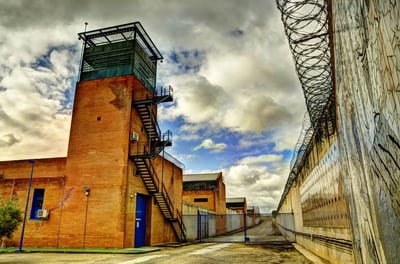Keep Your Detention Center Employees Safe With Duress Alarms
 For every 100,000 U.S. residents, 724 are in prison. This is the highest rate of incarceration in the entire world. While keeping these dangerous criminals off of the streets is essential for our national security, it is left to fewer than 500,000 people to see that more than two million prison and jail inmates are kept safe from each other and away from society. Too often, these workers find themselves in harm's way, just by doing their jobs. About every 1 in 5,000 inmates commits a serious assault on a staff member every single month; about 90 of those inmates will commit less serious assaults on prison workers.
For every 100,000 U.S. residents, 724 are in prison. This is the highest rate of incarceration in the entire world. While keeping these dangerous criminals off of the streets is essential for our national security, it is left to fewer than 500,000 people to see that more than two million prison and jail inmates are kept safe from each other and away from society. Too often, these workers find themselves in harm's way, just by doing their jobs. About every 1 in 5,000 inmates commits a serious assault on a staff member every single month; about 90 of those inmates will commit less serious assaults on prison workers.
Federal Prison Advisory Group Recommends Alarm Systems for Detention Workers
In 2011, following some particularly gruesome and horrifying attacks on prison workers, the National Institute of Corrections issued some recommendations for keeping these workers safer. The goal is to keep workers safe without having to introduce lethal force into the already dangerous scenarios. Guard's and staff member's guns could be taken away from them and used against them, other inmates, prison guests, and other innocents. The group recommended a combination of pepper spray and alarms. These do not threaten the prison population, yet provide the officers and staff an added layer of security.
Alerting Officers & Staff of Who is Down and Where They Are
Duress alarms are capable of doing more than sounding an alarm. These units are designed to send out notification to officers and staff members of the exact name of the person in harm's way and where they are at the time. The other facility staff can then send help exactly to where it is needed. This isn't just a measure of protection in the event of an attack on the officer or staff member, it is also a safeguard against ordinary emergencies that can happen anywhere, such as a heart attack or a fall resulting in an injury.
Alerting Officers & Staff When the Person is Unable to Send for Help
Sometimes, the person is seriously injured, unconscious, or otherwise incapacitated, and simply cannot send for help. Duress alarms also include features like man down and no response alarms. Man down alarms are designed to sound the alert when the wearer is in the prone position, even if the person is not able to sound the alarm for themselves. No response alarms are made to sound an alert if the person does not respond in a certain amount of time.
The best duress systems for prisons, jails, and detention centers are wireless systems. Wired systems have too many potential problems, such as physically running the cables where they can't be cut or used as a weapon, power disruptions that render the units useless, and being out of reach when an incident occurs. You also need to consider a duress system that does not incur monthly charges, such as airtime or monitoring charges.
Duress alarm systems are the ideal way to keep staff, guards, and others safe, while introducing no dangerous weapons into the inmate population. If you would like to learn more about the TTI wireless duress alarms, request a quote today.





